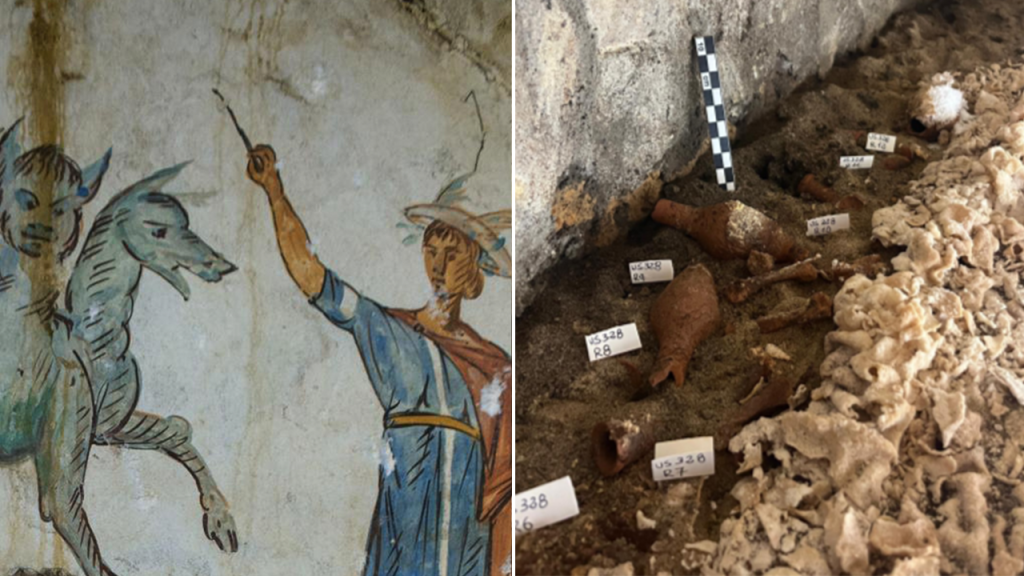Archaeologists in Italy were surprised during an investigation inside the Tomba del Cerbero after discovering that the 2,000-year-old stone coffin, or sarcophagus, could be physically opened. This tomb, located in Giugliano near Naples, had been unsealed for the first time last year. Upon opening the sarcophagus, experts found a mummy in excellent condition, lying face-up and covered by a shroud which had mineralized due to the burial chamber’s climatic conditions. The discovery is significant as it provides valuable information on the Phlegraean territory near Liternum, expanding knowledge of the past and offering opportunities for multidisciplinary research.
The well-preserved remains of the body found in the tomb have led experts to believe that it may be the founder of the family for whom the mausoleum was built. Surrounding the mummy were various ointments and a small metal tool used in Ancient Greece and Rome for cleaning the body before bathing. Laboratory analysis on samples taken from the tomb has provided valuable data on the treatment of the deceased’s body and the funerary ritual conducted. This ongoing investigation is being conducted by archaeologists, technicians, chemists, and anthropologists funded by the Italian Ministry of Culture.
The tomb’s discovery is a significant find in the Phlegraean Fields, a large caldera volcano west of Naples, Italy. This discovery provides insight into the past and opens up possibilities for further research into the history of the region. It is believed that this mummy could be the key figure in the family for whom the tomb was constructed, shedding light on the rituals and practices of ancient burial customs. The careful preservation and analysis of the mummy and its surroundings will help uncover more information about the past.
The opening of the Tomba del Cerbero has offered new insights into the burial practices of the ancient Romans and Greeks in the Phlegraean Fields. The discovery of the mummy in such a well-preserved state, along with the various artifacts found in the tomb, has sparked further interest in the history and culture of the region. Ongoing investigations and sampling activities conducted by experts from various fields will continue to shed light on the significance of this discovery and its implications for our understanding of ancient civilizations in Italy.
The discovery of the mummy in the Tomba del Cerbero has generated excitement among archaeologists and historians in Italy. The well-preserved condition of the body and the artifacts found in the tomb have provided valuable information on the burial practices and rituals of the ancient past. The ongoing research and analysis being conducted by experts from various disciplines will continue to deepen our understanding of this significant discovery and its implications for the history of the region. With the support of the Italian Ministry of Culture, this investigation will contribute to the body of knowledge on ancient civilizations in Italy and beyond.
The opening of the tomb near Naples has led to a significant discovery of a mummy in excellent condition, shedding light on the past practices of burial and funerary rituals. The careful preservation of the mummy, along with the artifacts found in the tomb, has offered valuable insights into the culture and history of the region. Ongoing investigations and sampling activities conducted by experts will continue to provide new information on this discovery and its significance for our understanding of ancient civilizations. With the support of the Italian Ministry of Culture, this research will contribute to the broader body of knowledge on the history and archaeology of Italy.


